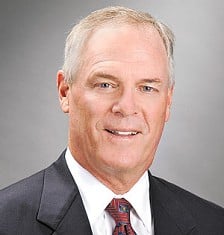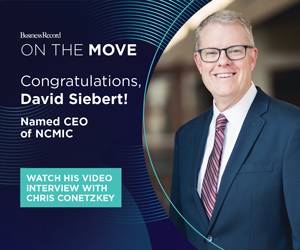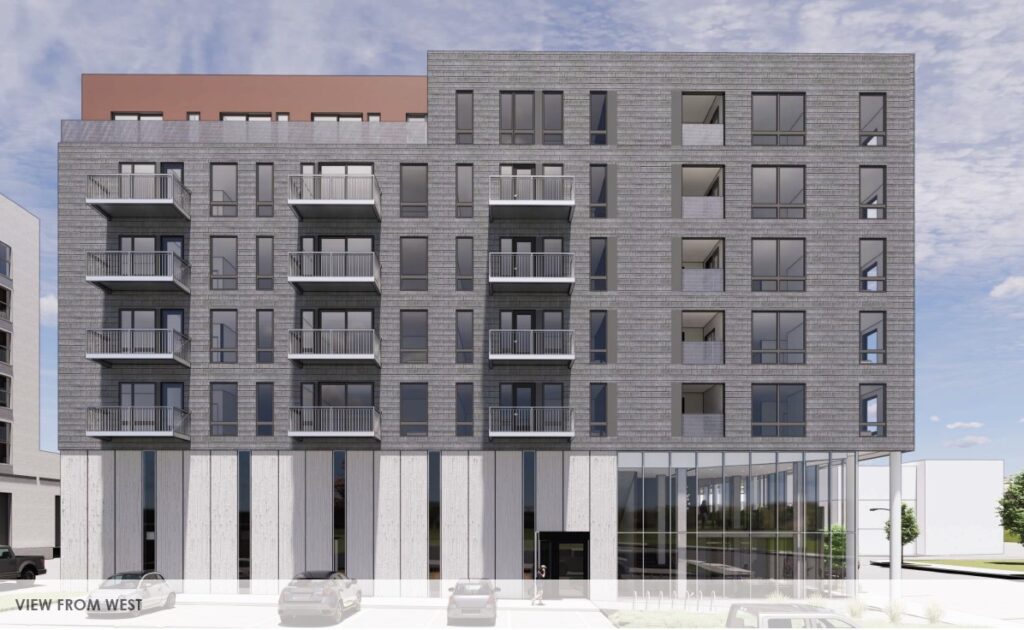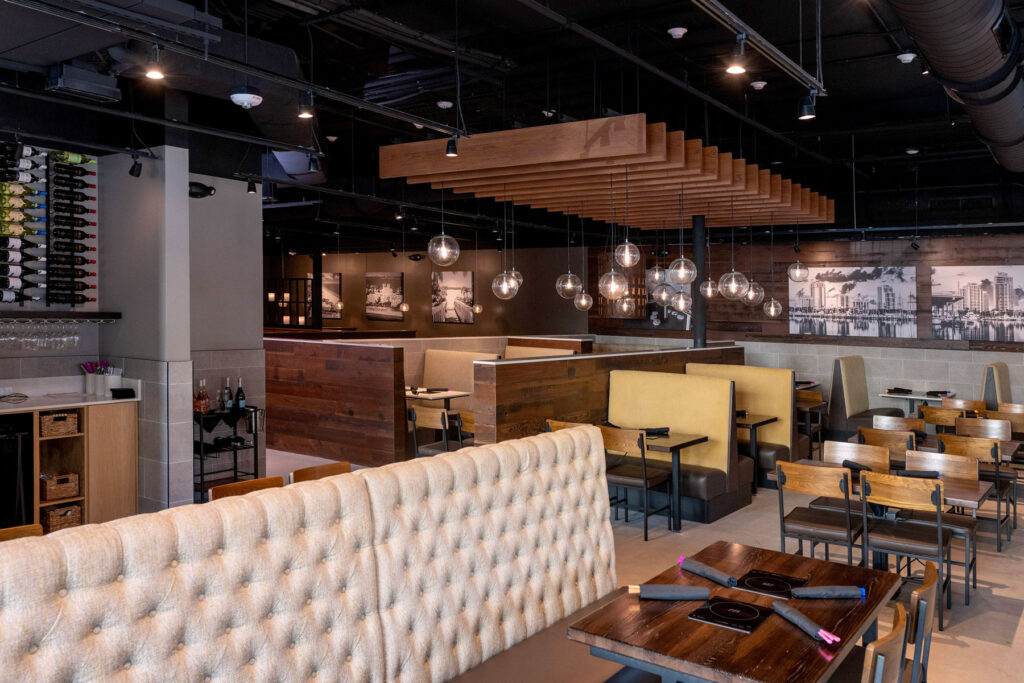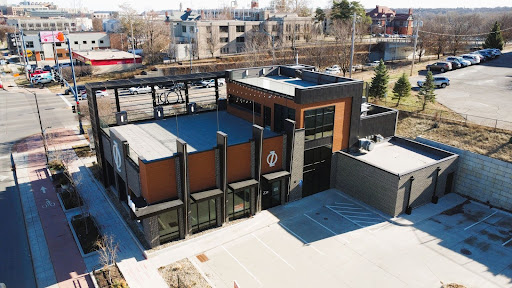A complicated company becomes more nimble

An organizational contraction at The Weitz Co. can be attributed in part to the weak economy; otherwise, the 155-year-old company is smaller today because of its ability to plan ahead.
Earlier this year, the employee-owned general contractor shuffled its top management and took an eraser to its organizational chart, reducing the number of its independent operating units to three from 11 and placing them under the supervision of regional directors..
The change was remarkable because Weitz had relied on those separate units, each with their own administrators, to generate the kind of entrepreneurial spirit that helped the company become one of the largest contractors in the country.
“With separate business units, there was a lot of autonomy to create your own success. Now, there is a feeling of belonging to something larger than yourself,” said Len Martling, who was named president and CEO in June after spending 29 years with the company.
It was not the first change in operations in the history of a company founded by a German immigrant and owned until 1995 by his descendants. When employees bought the company from the Weitz family, it spun off other operations into what have become notable Greater Des Moines businesses, including Alliance Technologies Inc. and Life Care Services Inc.
Improving foot speed
“We have been through this before,” Martling noted.
What was key for the company was to be able to react quickly to a changing economy.
Weitz officials had noted the gradual slowdown in residential construction in Greater Des Moines and across the country, but the staggering effects did not hit home until the collapse of Regency companies in April 2008.
A drop in commercial construction typically follows a decline in home building by about six months.
“Everybody knew that residential was taking a hit, but they didn’t realize how big,” said Mike Tousley, a 30-year Weitz veteran who was named director of Weitz’s Midwest business unit as part of the reorganization.
Weitz is seeking a more balanced portfolio, one that will include fewer eye-catching jobs, such as the construction of the Aviva USA headquarters in West Des Moines and Wellmark Blue Cross and Blue Shield’s new campus in downtown Des Moines.
Those jobs, conceived prior to the decline in residential and commercial construction in 2008, helped carry the company through 2009 and into 2010.
Even with the economy on the rebound, few economists predict a rapid resurgence of commercial construction. The U.S. Census Bureau reported recently that public construction, aided by federal spending on stimulus, military base realignment and Gulf Coast hurricane-control projects, edged up 0.4 percent in October from September and 2.2 percent year-over-year. However, all 11 of the Census Bureau’s private nonresidential categories were below year-ago levels, with only private power and transportation showing gains from September.
“Work in a number of cities where Weitz has offices has begun to stabilize,” Martling said. “The Midwest has been kind of slow to the dance. Swings in the economy are more moderate here, so we don’t expect a huge swing upwards next year.”
The company, which booked more than $1.5 billion in business in 2007, saw that number drop to about $900 million this year. Martling expects bookings to rise to about $1.1 billion in 2011.
Large by any measure
The downturn hit general contractors large and small.
Weitz is ranked by trade publication Engineering News-Record (ENR) as the 41st-largest general contractor and 33rd-largest green builder in the United States and the 152nd-largest contractor in the world, based on 2009 revenues.
The publication said the construction industry’s backlog of large projects deflated in 2009, with its largest 400 contractors reporting revenues of $290.6 billion, down 14.1 percent from $338.3 million in 2008.
The bright side was for green contractors. ENR said its top 100 green contractors reported $43 billion in revenues on projects registered with or certified by third-party organizations such as the U.S. Green Building Council, which developed the Leadership in Energy and Environmental Design (LEED) certifications. The green builders reported revenues of $28.7 billion in 2008.
Projects that drive an increase in business next year for Weitz might not look the same as other work the company has done in Greater Des Moines.
Russ Lewton, a 23-year Weitz veteran who was named head of its Iowa business unit in the reorganization, said 80 percent of his division’s jobs are valued at less than $10 million.
The company can stay busy with jobs in the public sector, including education, and other projects, such as a remodeling at ChildServe and construction of an enclosure for heating, cooling and ventilation systems at Des Moines University. He said the company is noticing a rebound in industrial construction.
“We’re not seeing the really huge projects; there are fewer in general from the private side,” he said.
In addition, Weitz landed a $32 million contract to demolish and reconstruct the interior of Veterans Memorial Auditorium. Lewton said the local division will do about $140 million in business this year and about the same amount in 2011.
Staying busy around the globe
The company stays occupied outside Greater Des Moines.
On Tuesday, the 69th anniversary of the attack on Pearl Harbor, a select group of guests will get their first look at the $58 million reconstruction of the USS Arizona Memorial Pearl Harbor Visitor Center in Hawaii. The 30-year-old center was sinking, and among the tasks confronted by Weitz and its subsidiary, Honolulu-based Watts Constructors, was putting in place pilings that would keep the facility above water.
The acquisition of Watts in 2006 also has opened the door to lucrative federal and military contracts, including construction of a military base on the island of Guam. (See story in the Nov. 1 Business Record or read the story online at http://tinyurl.com/24gt2ty)
Weitz also was chosen as the general contractor on a light rail project in Arizona, and it has constructed waste water treatment facilities in New Mexico and California.
Due both to the economy and consolidation of its operations, Weitz has about 700 salaried employees, down from about 1,200 in 2008.
It has maintained an industrial construction division and its construction partnership with Hy-Vee Inc., which Tousley said is one of the company’s strongest performers.
Large and lean
Though Weitz has gained national attention as a green builder, Martling said that designation shouldn’t be interpreted to mean that the company, or its clients, sets out to acquire LEED designations, especially if the certification is used mostly as a marketing gimmick.
Martling’s focus is on lean construction, in which early planning for a job eliminates waste, can reduce the amount of materials used and leads to a more sustainable project.
The company is more interested in “sustainable steps to reduce costs and increase efficiencies,” he said, than in getting a LEED certification.
Lewton said LEED’s focus on design, energy efficiency and systems performances is useful, and typical of normal design considerations.
One market that Weitz will not enter is custom home building, said Martling, a former home builder.
“It’s a vision thing,” he said, noting that homeowners typically want to change course several times during construction.
Weitz would prefer to keep it all in balance.

